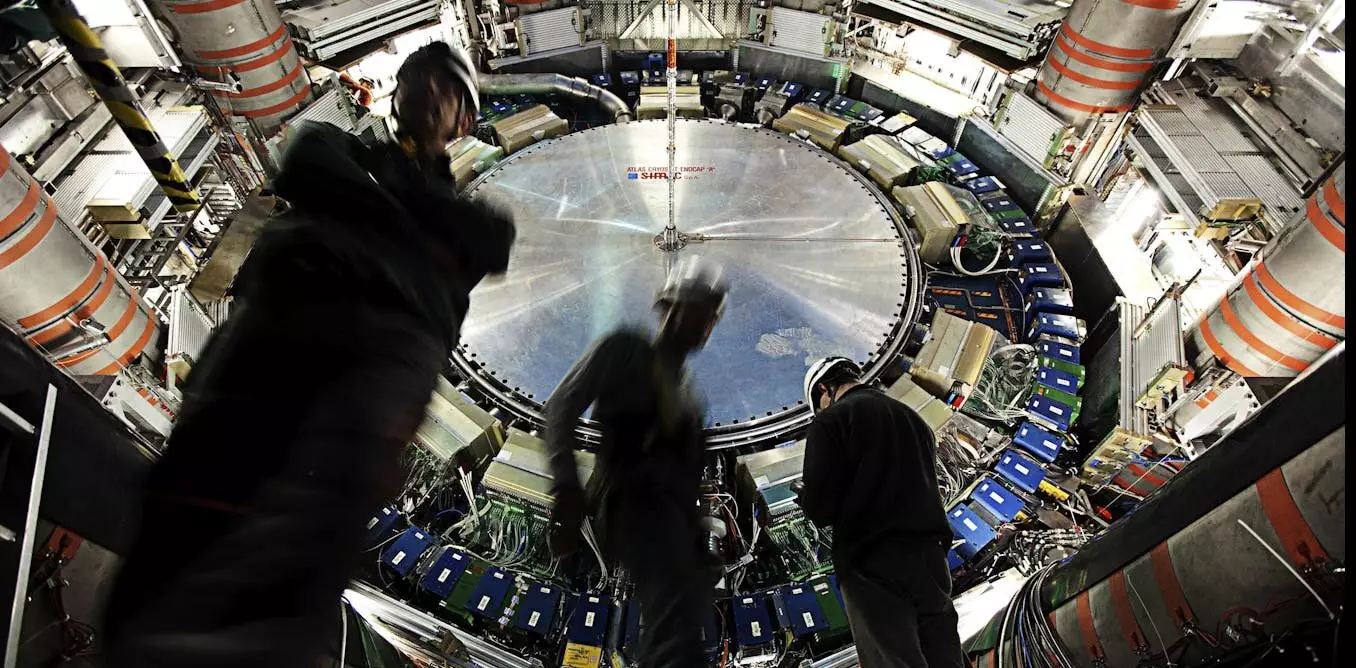Quantum entanglement is one of the most bewildering predictions in physics, demonstrating a connection between particles irrespective of the distance that separates them. At its core, entanglement challenges conventional intuitions about space and interactions, suggesting that two particles can exist in a state where the measurement of one instantly influences the state of another—no matter how far apart they may be. While previous studies have primarily focused on less massive particles like photons, an exciting new development has emerged from the Large Hadron Collider (LHC) in Geneva, revealing entanglement among top quarks, the heaviest particles identified to date.
The ATLAS collaboration at the LHC has unveiled this significant finding in a recent paper published in *Nature*. While entangled photons have been demonstrable since the 1980s, witnessing entanglement with quarks—particularly the exceptionally heavy top quarks—opens a whole new arena of quantum research. This experimentation not only underscores the versatility of entanglement as a phenomenon but also enhances scientific understanding of the fundamental forces and components that govern matter.
The top quark is intriguing for several reasons: it is approximately 184 times the mass of a proton, making it the heaviest known elementary particle. This immense mass may provide clues to undiscovered physical laws, suggesting that it could be influenced by forces beyond those currently understood through the framework of particle physics. In essence, the top quark may serve as a key to unlock deeper truths about the universe.
The classical perspective on objects is often binary—an object is either connected or not. However, entanglement blurs these lines. When two particles are entangled, measuring one immediately informs us about the other, giving the appearance of a connection even in their apparent isolation. This peculiar interplay of separation and interconnected behavior can be illustrated through imaginative analogies, likening it to the mystifying relationships depicted in sci-fi narratives.
Take, for instance, the recent adaptation of Liu Cixin’s *3 Body Problem*, where characters interact with a technologically advanced and alien intelligence through entangled particles. While the show incorporates fictitious elements of communication over light-years, it does resonate with the essence of entangled quantum states. However, it’s crucial to recognize that while entanglement allows for states to influence each other, it does not facilitate instantaneous communication or control—a fundamental tenet that quantum physics strictly adheres to.
Entanglement holds potential far beyond theoretical curiosity. It is at the heart of burgeoning technologies like quantum computing, where the manipulation of entangled particles can lead to exponential increases in processing power and speed. Yet, entanglement is delicate; interactions with the environment can disrupt these quantum states. This fragility necessitates refined experimental setups that often depend on cryogenic temperatures to stabilize systems against disturbances.
With the discovery of entanglement in top quarks, researchers may explore new methodologies to leverage this phenomenon. The robustness of top quarks creates a unique laboratory for researchers who pursue entangled particle studies, paving the way for deeper experimental insights into the dynamics of quark interactions.
As researchers continue to observe quantum entanglement in various forms, questions remain about the stability and application of entangled states. Top quarks may not become the cornerstone of consumer technology—after all, the LHC is a monumental and fixed installation—but they serve as a vital tool for scientific inquiry. Continued studies could bridge the gap between the quantum realm and macroscopic applications, fostering novel approaches to material science, cryptography, and beyond.
This ongoing quest for understanding the intricacies of quantum mechanics is a testament to humanity’s enduring curiosity and desire to unravel the enigmas of existence. Each discovery, be it confined to the microcosm of particle interactions or scaling towards cosmic implications, contributes to an evolving narrative that reshapes how we comprehend the universe and our place within it.
Through rigorous research and unyielding ambition, the journey toward deciphering the mysteries of entanglement may one day illuminate the pathways of new physics—perhaps even laying groundwork for technologies we have yet to conceive. The realm of quantum physics is alive with possibilities, and the exploration of top quarks represents but one step in a much larger scientific odyssey.


Leave a Reply